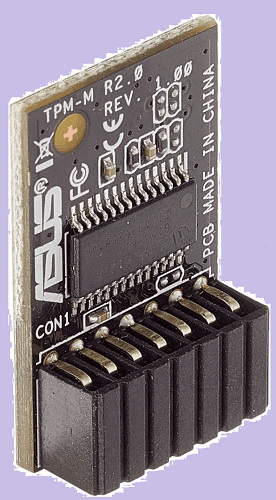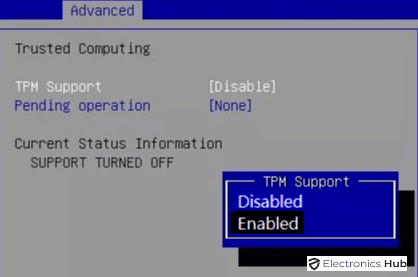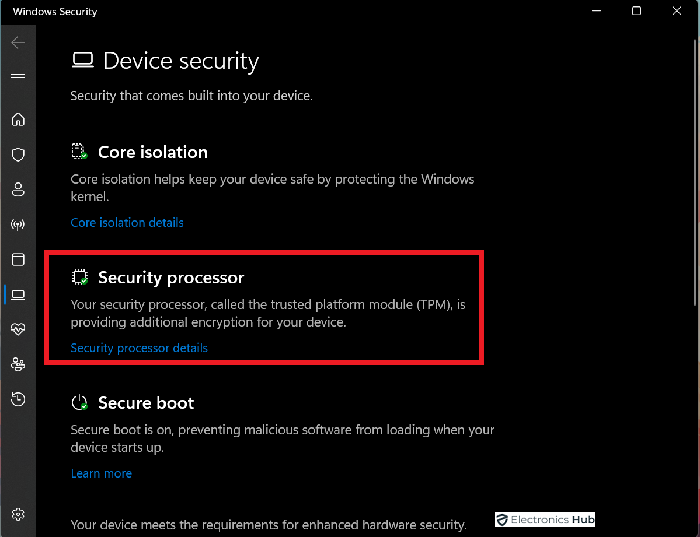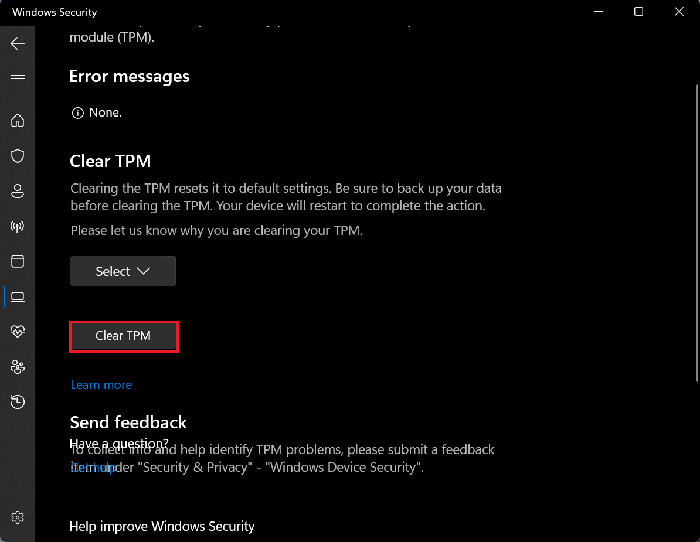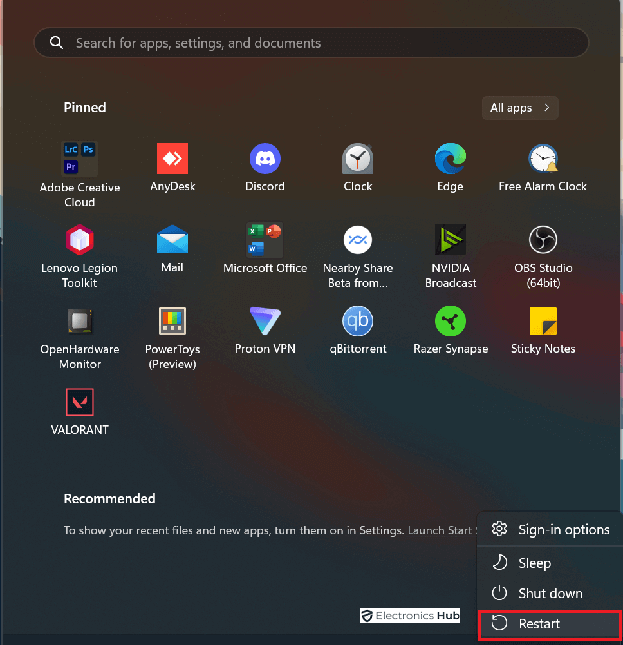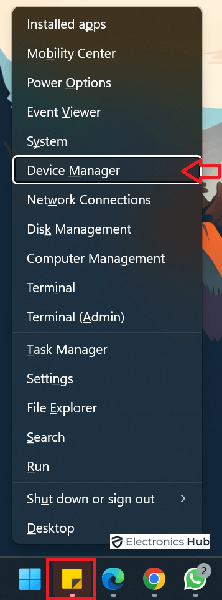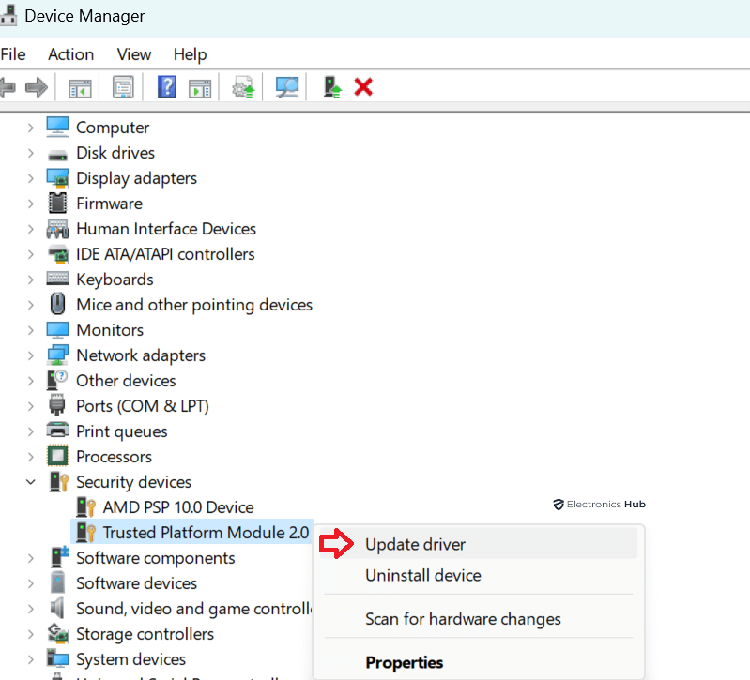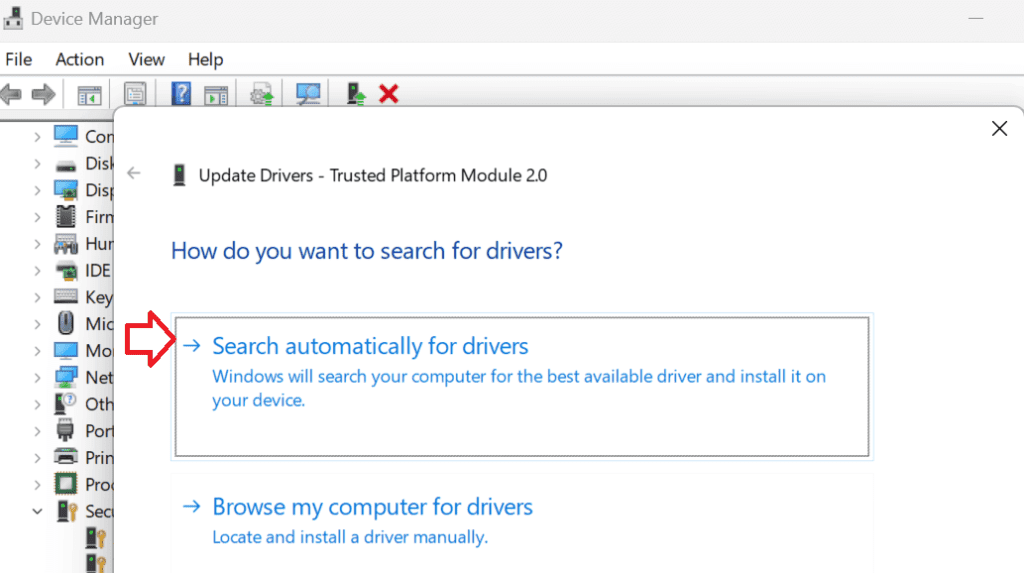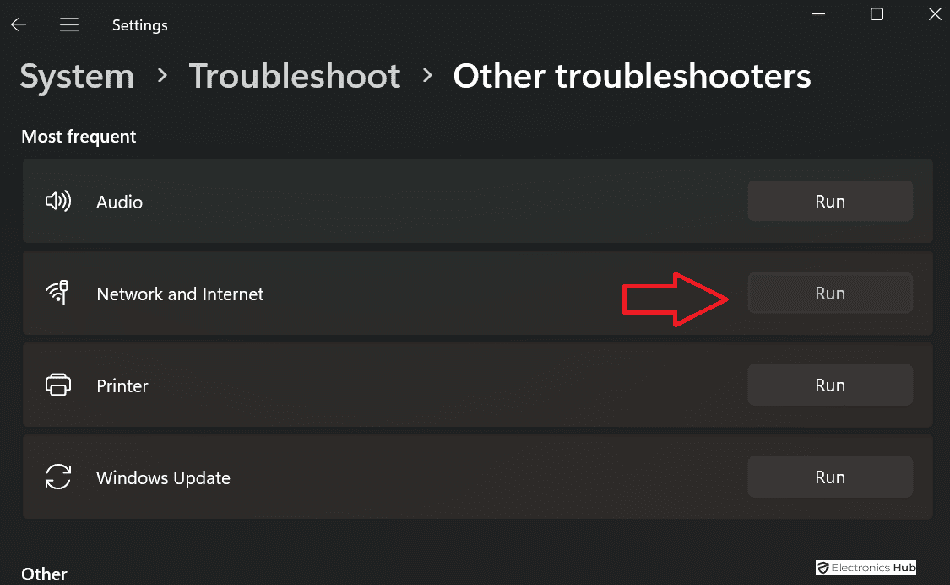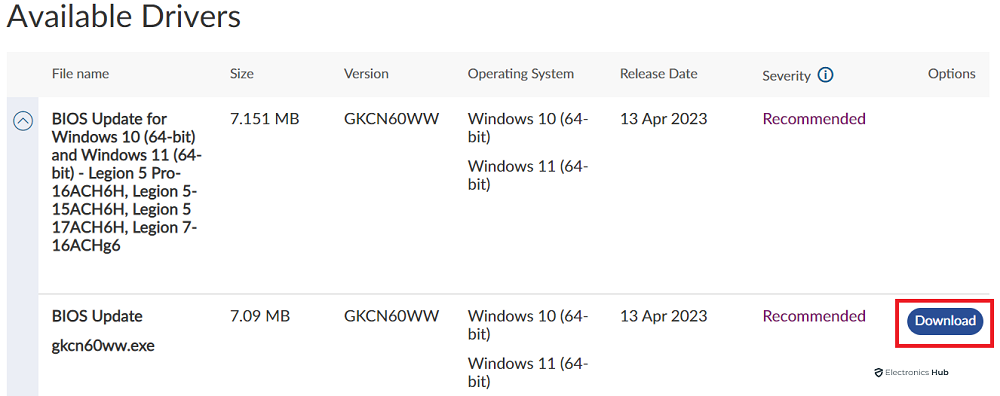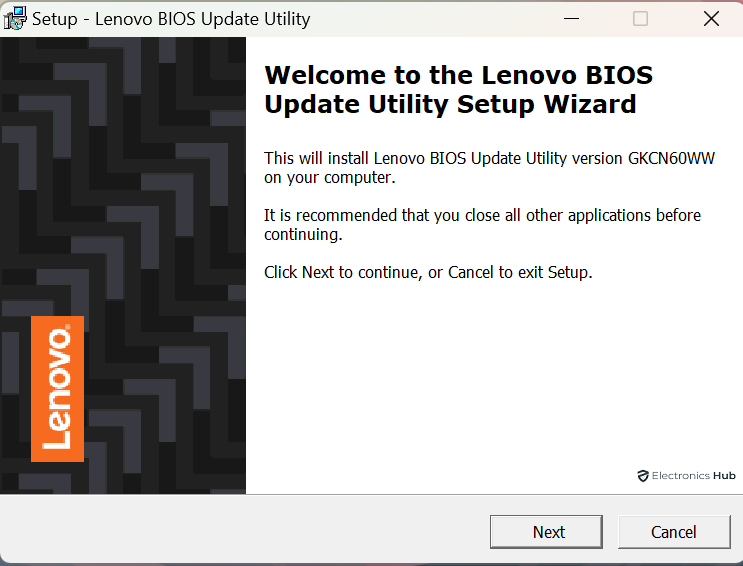Since most of us keep all of our devices connected to the internet at all times, the chances of a potential data breach or cyber attack increase much more. Thankfully, this is not an issue for most of the time thanks to the inclusion of security features like the TPM device found in your computer. Because this TPM device is necessary in your computer for encryption and decryption, it is highly important to ensure that it stays functional at all times. However, if yours isn’t working properly or you are facing the “TPM Device not Detected” error, then we are here to help. You can simply go through this guide till the end and learn how to fix the “TPM Device not Detected” error.
Outline
ToggleWhat is a TPM Device?
Unless you are a power user or work as a cyber security specialist, you will likely hear about a TPM device for the first time. In that case, you must know that a TPM device stands for a “Trusted Platform Module” which essentially authenticates all trusted files, platforms, and encryption-decryption methods. In simpler words, a TPM device is present in all computers for enabling encryption and decryption which are highly important for protecting your computer and all of the data stored in it.
What causes the TPM Device not Detected Error?
If there is anything wrong with your computer’s TPM device, you will most likely face the “TPM Device not Detected” error. In case you are also facing the same, then it is most likely caused by one of the following issues:
Outdated or Incorrect BIOS Setup
The BIOS or the Basic Input Output System of your computer is used to change and manage a wide range of settings of your computer. Among the various settings and options available in the BIOS, you will also find TPM settings. Thus, an outdated version of the BIOS or simply incorrect BIOS settings can cause issues with the TPM device.
Disabled TPM Chip
Speaking of the TPM settings, your computer allows you to disable the TPM chip if needed in certain circumstances. This means that if you are facing the “TPM Device not Detected” error, it is likely that it might be caused because of a disabled TPM chip on your computer.
Damaged or Malfunctioned TPM Chip
Other than having software-related issues causing the “TPM Device not Detected” error, it is quite likely that you might be facing this error because of a damaged or malfunctioning TPM chip in your computer. Hence, you should also look for any potential hardware failure inside your computer to see why the TPM chip is not working anymore.
How to Check TPM Device Working or Error Status?
Since the TPM device of your computer is highly important for the overall system security, your PC will immediately let you know about any issues with the TPM. However, some of you may not get an error even if the TPM device is not working properly. Therefore, it is always a great idea to check the status of your computer’s TPM device to ensure its proper functionality as explained here:
- Start by pressing Windows Key + R on your keyboard to open Windows Run.
- Here, type tpm.msc and press enter.
- Now, use the console to check the TPM device status.
- If it says “Ready” then the TPM device is working properly. Otherwise, you may see a message as “The TPM is ready for use, but with reduced functionality” or as “TPM Device not detected. In either of these cases, you need to fix the TPM device of your computer right away.
How to Fix TPM Device not Detected?
If you have checked the status of your computer’s TPM device and it is not working or has reduced functionality, then fixing it right away is highly important for the overall security of your computer. Since this TPM device issue can be caused due to a number of reasons, you should try all of the following fixes and solutions for the “TPM Device not Detected” error:
Check for TPM Device Support
These days, most computers pay a lot of attention to cyber security and include all the necessary features for the same. Although, this is not true for older computers which may not contain a TPM chip in the first place. Thus, you should first check the user manual or the specifications list of your computer to confirm whether it comes with a TPM chip or not. In case it is missing one, then you can easily add a third party TPM chip to your computer later on.
Enable TPM from the BIOS
As mentioned previously, the BIOS of your computer allows you to change various settings on your computer including TPM settings. Hence, you should try enabling the TPM chip from the BIOS of your computer by following these steps:
- You first need to restart your computer while spamming the BIOS key of your computer as it boots.
- Depending on the computer that you are using, this BIOS key might be F2, F10, or Delete. You can either spam all of them to enter the BIOS or refer to the user manual of your computer.
- Once you are in the BIOS of your computer, you need to look for the TPM option. Generally, this will be under the Security or the Advanced Tab.
- After finding the TPM option, simply enable it and select Save and Exit which will restart your computer and fix any TPM device issues.
Clear TPM Cache
If the TPM device or the TPM chip of your computer is already enabled, then you might be facing issues with the TPM because of any corrupt data or cache. Thus, it is also a great idea to clear the TPM cache of your device as mentioned here:
- First, open Windows Settings and search for Device Security.
- Here, click on the Security Processor Details under the Security Processor option.
- After that, click on Security Processor Troubleshooting.
- Now, click on Clear TPM and click on Yes to continue.
- Once that is done, restart your computer to clear the TPM cache and fix issues related to it.
Update the TPM Driver
Another possible software issue with the TPM device or TPM chip can be an outdated TPM drive. Similar to all other devices and components inside your computer, the TPM chip also has its own driver. Hence, make sure to update the same regularly to fix all issues with the TPM chip:
- Start by opening the Device Manager on your computer by pressing Windows + X.
- Now, expand Security Devices and right click on Trusted Platform Module 2.0 to select Update Driver.
- You can then automatically update the TPM driver to fix all issues with the TPM chip of your device.
Unplug External Devices and Power
While it is not quite common, some users have reported issues with the TPM device or the TPM chip because of external devices and power. Thus, you should first remove all external devices and reboot your computer to see if that fixes the issue.
You should also do a power cycle on your computer by removing the power plug, removing all batteries, and pressing the power multiple times to drain any power left inside. Then, wait for a few minutes before plugging the power cord in again.
Troubleshoot your Network Connection
Since the TPM chip is there to protect your computer from cyber attacks that happen over the internet, network connection issues on your computer can potentially malfunction the TPM device. Hence, try troubleshooting your network connection as explained here:
- Press Windows Key + I on your computer to open Windows Settings.
- Now, go to System, Troubleshoot, Other Troubleshooters, and click on Run next to Network and Internet which should fix all issues regarding the TPM device if caused by your network.
Update your BIOS
Other than fixing all of the BIOS settings regarding the TPM device of your computer, you should also consider updating the BIOS of your computer. While you should refer to the user manual of your computer to follow the exact instructions, the overall process includes the following:
Head over to the support website of your computer and download the installer for the latest BIOS version.
- Now, simply open this installer and follow the onscreen instructions to update the BIOS of your computer and fix TPM device issues.
- Make sure that you are updating the BIOS of your computer correctly as an incorrect BIOS update can render your computer useless.
Change the TPM Hardware Chip
As mentioned previously, you can always add a third party TPM chip to your computer if yours doesn’t have one. This means that if the TPM chip of your computer is not working anymore, you can also consider replacing it with a third party one to see if that fixes the issues with it.
Contact Technical Support
Those of you who have tried all of the various solutions and fixes given above regarding the TPM chip should contact the technical support of your computer’s brand as a last resort. You can get in touch with them to fix both software as well as hardware issues which will fix all TPM issues with it.
FAQs
A. In case you are seeing the “TPM Device not Detected” error on your computer, then it most likely means that your computer is not able to use a functional TPM device. You can face this error when there is either no TPM device in your computer, the current one is not functional, or when your computer is not able to access your functional TPM device because of an issue or bug.
A. Just like many other hardware components of your computer, having a TPM device or a TPM chip is also highly important. This TPM device or TPM chip ensures all around security and safety of your computer. Not only is it used for encryption and locking your files, but it also protects your computer from potential cyber attacks.
A. If you are facing the “TPM Device not Detected” error on your computer because of a missing or nonfunctional TPM device, then you can run into various issues. But the primary will be not to lose access to all features based on encryption and decryption of data which is highly important for locking files and overall data safety on your computer.
A. While there can be various possible causes of the “TPM Device not Detected” error including both hardware and software issues, some of the common ones include outdated firmware or software, incorrect BIOS version or settings, and lastly hardware failure. If your computer has one or multiple of these issues, then it is highly likely to run into the “TPM Device not Detected” error.
Conclusion
Whether you are using your personal computer or your computer, the last thing you would want on your computer is to have any kind of data breach or cyber-attack. And to prevent any such issue, it is highly important to have all security features of your computer functioning properly. One such major feature or security device found in all computers is the TPM device used for file encryption and preventing cyber attacks. Thus, if you are facing the “TPM Device not Detected” error, you must fix it immediately. You can refer to the complete guide on how to fix the “TPM Device not Detected” error given above for the same. If this guide helps you with the same, then make sure to leave your thoughts and suggestions in the comments section down below.

